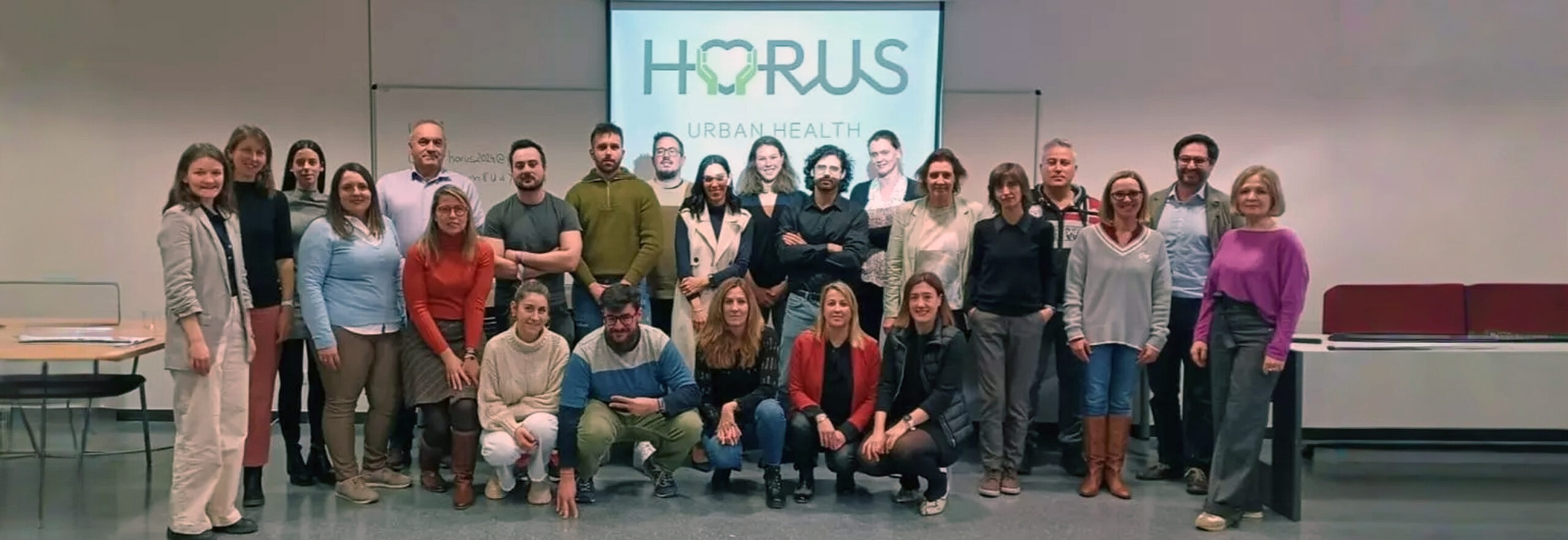‘Addressing public health challenges such as the existence of non-communicable diseases (NCDs), through a multidisciplinary approach that correlates the links between the built environment and the risk of suffering from these illnesses in vulnerable communities, and in turn, proposing actions to improve the context and situation’.
This is the aim of the HORUS project, which involves researchers from BDSLab-ITACA led by Juan Miguel García Gómez, together in a consortium of 7 partners coordinated by the Polywellbeing Institute of the University of Valencia.
The research, funded by the European Union, is based on the reality that the urban built environment, such as buildings, transport and green spaces, have a decisive role in the public health and well-being of the communities living in these neighbourhoods.
Therefore, the project will address from a socio-technical perspective and using a battery of innovative tools such as Wakamola – a chatbot developed by researchers at the ITACA-UPV Institute to collect information related to participants’ healthy lifestyle habits -, or Lalaby – an application to measure quality of life using mobile phone sensor technology -, which characteristics influence the prevalence of risk behaviours associated with NCDs, such as diabetes and cardiovascular diseases.
It will also explore what types of interventions and possible urban improvements could have a positive impact on the prevention of these diseases.
The pilot study cases
Specifically, the team of researchers from the BDSLab will focus their work on adapting, developing and applying technologies such as Wakamola or Lalaby to monitor and evaluate the pilots.
“These apps, in charge of collecting lifestyle-related measurements, will be able to tell us what are the habits of these populations and the positive impact of pilots sudy cases help to improve lifestyle habits’, explains Vicent Blanes, ITACA-UPV researcher participating in the project.
Pilot interventions in Valencia, Rijeka (Croatia) and Rotterdam (the Netherlands) will promote healthy lifestyles in vulnerable communities, such as low-income, immigrant and ethnic minority communities,’ says the BDSLab researchers.

What is the built environment?
The built environment refers to those places constructed, such as buildings, parks, transport infrastructure or footpaths, where people go about their daily lives. There is extensive literature confirming that the built environment influences public health in general and non-communicable diseases (NCDs) specifically, in terms of promoting active lifestyles, appropriate diets or reducing exposure to pollution.
Physical activity is considered to play a key role in the impact of the built environment on NCDs. In particular, increased walking capacity in urban areas has been positively associated with positive effects against cardiovascular risk and diabetes, also in studies with ethnically diverse participants.
The Biomedical Data Science Laboratory (BDSLab) of the ITACA-UPV Institute
The Biomedical Data Science Laboratory (BDSLab) of the ITACA-UPV Institute is a multidisciplinary research group composed of more than 15 researchers committed to the development of technology based on data science and artificial intelligence for real health problems.
Its know-how covers machine learning, predictive modelling, data quality and variability, multi-parametric tissue signatures, decision support systems and medical imaging. In fact, participation in projects and contracts has allowed them to develop more than a dozen scientific software that help improve medical care and clinical decision making.



